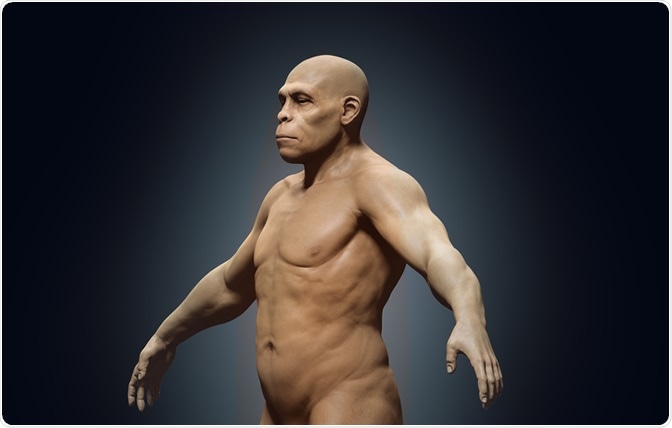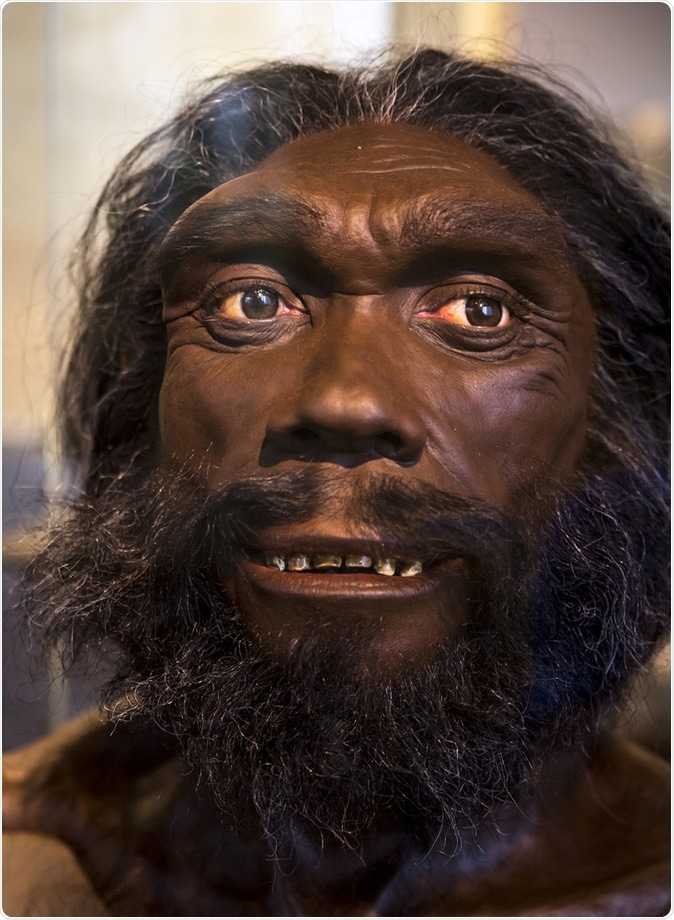Early Homo sapiens had thick bone brows, this made raising eyebrows and a host of other facial expressions difficult for them. With passage of time evolution took its course and the brows smoothened.

Image Credit: Carlos Restrepo / Shutterstock
Now, scientists at the University of York have speculated that raising eyebrows and other facial expressions evolved as the shape and structure of the face of men changed with time making them smaller and flatter. The study appeared in the latest issue of the journal Nature Ecology & Evolution.

A 3D rendering of a homo sapiens ancestor - homo erectus
Paul O’Higgins, a professor of anatomy and lead author explained that thick eyebrows and forehead meant dominance and aggression. With time the face became smoother and smaller with the forehead flattened and the face now became a canvas of sorts.
A “wider palate of expressions” he said could be displayed on the face now. There are muscles of the face that could move and raise the eyebrows for example so that feelings could be expressed on the face.
Penny Spikins, a palaeolithic archaeologist at York and co-author explained that men were at a stage where they were more about competing with each other and aggression and dominance thus took an upper hand.
From there humans have moved to a place where people get along better with others, express sympathy and myriad of other emotions on their faces. She said that expressing emotions on the face led to the ability of humans to create social networks.
Prehistoric modern humans, she explained avoided inbreeding by moving out to different locations during hard times. “Eyebrows are the missing part of the puzzle of how modern humans managed to get on so much better with each other than other now-extinct hominins,” Spikins said.
For this study the team of researchers looked at the prominent brow ridges in the ancient humans. There have been many theories regarding why these ridges were prominent. Some speculated that these were a bridge between the brain case or the skull and the face that was more protruding. The ridges also structurally reinforced the face as the muscles worked at chewing say some experts. The team with the help of Ricardo Godinho, took 3D x-ray scans of an ancient skull. It belonged to a human ancestor called Homo heidelbergensis.

Mask representing the Homo Heidelbergensis, a caveman who lived on Earth thousands of Years ag. Marcio Jose Bastos Silva / Shutterstock.com
This human ancestor called Kabwe 1 lived in the region now Zambia between 600,000 and 200,000 years from now. Kabwe 1 had a brow ridge that was more pronounced than the Neanderthals.
O’Higgins explained that next they took the 3D image and used their computer imaging to assess the amount of bone needed to fill the gap between the skull or brain case and the face. Soon they noted that the ridge was an extra. Much of it could be shaved off virtually. They also assessed if that thick a ridge was necessary for chewing functions. Again they noted that the ridge was not so important in allowing heavy chewing.
O’Higgins said, “What we are left with is the plausibility of a social explanation.” This means that aggression and dominance was a reason behind the thick brow ridges in human ancestors. The team acknowledges that whole of this is merely a speculation and the reason why the faces of humans flattened out with time is not yet known.